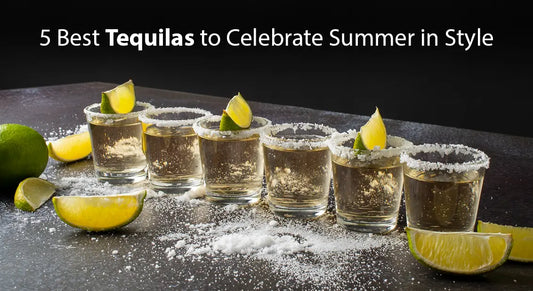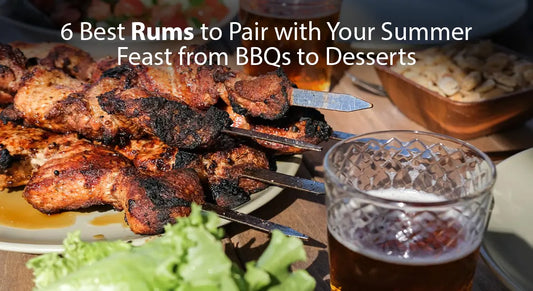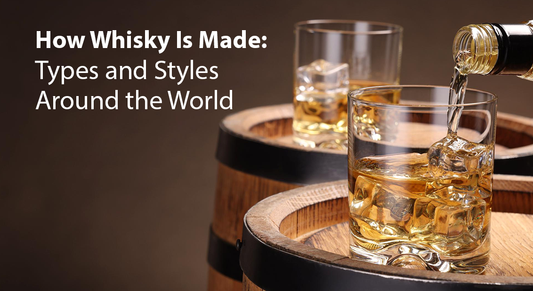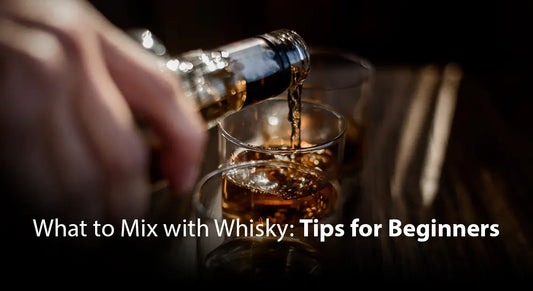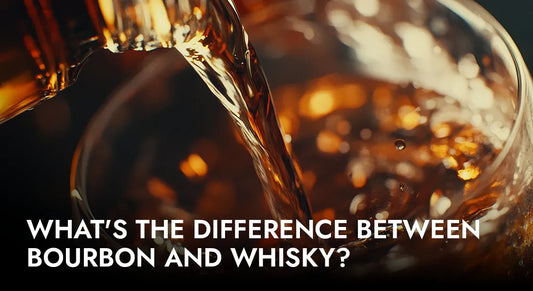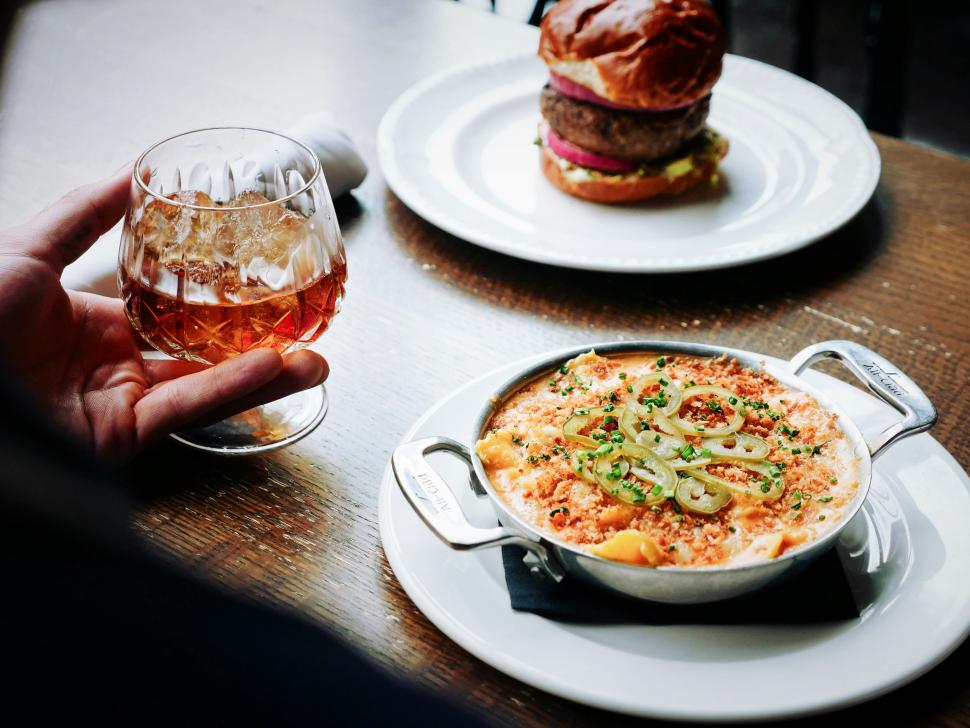
Whisky and Food Pairing: A Beginner's Guide
Eating without a drink is like a day without sunshine, but sometimes a drink on its own is just what you need. Scientifically, we drink water or liquids after eating to help push the food down, cleanse our palate, or quench our dry throat. But as society has evolved, so have our drinks. They have become more complex and specialized, with specific drinks for specific foods. With so many drinks in the market, we can now elevate our dining experience by pairing our favorite whiskies with our favorite dishes. It's like discovering a whole new dimension of enjoyment to our meal. Whether you're pairing with steak or chocolate, our whisky collection has bottles for every flavour experience.
Drinks can be enjoyed with food as long as they complement each other. The same applies to whisky. Just as it has different taste profiles, we can pair it with a variety of dishes. You have biases but suggested pairings are available to the public that you can try out. Who knows, you might discover a new favorite.
Whisky Taste
Factors affecting the taste of whisky
The taste of whisky can be influenced by a variety of factors, including the ingredients used in production. Here are some of the key ingredients and factors that can impact the taste of whisky:
- Grains: The type and ratio of grains used in the production of whisky can impact the flavour profile. For example, barley is a common grain used in Scotch whisky and can contribute to a malty, nutty, or biscuity flavour profile. Corn is used in Bourbon and can contribute to a sweet, mellow flavour profile.
- Water: The mineral content and purity of the water used in production can also impact the flavour of whisky. Some whisky distilleries are located near natural water sources with unique mineral content, which can contribute to a distinct flavour profile.
- Yeast: The type of yeast used in fermentation can impact the flavour of whisky. Some strains of yeast can produce fruity esters, while others can contribute to a more neutral flavour profile.
- Barrels: Whisky is typically aged in oak barrels, which can contribute to the flavour profile. The type of oak, as well as whether the barrels are new or have been previously used for other liquids like sherry or bourbon, can impact the flavour.
- Age: The length of time that whisky is aged can also impact the flavour profile. Longer aging can lead to a smoother, more complex flavour profile, while younger whisky may have a more raw or harsh taste.
Different Tastes of Whisky

Distilleries produce their whiskies in ways that create aromas and flavour profiles that are distinctively theirs. The following are the common tastes that resulted from production.
- Smokiness: Some whiskies, particularly those from Scotland, have a smoky flavour. This comes from the use of peat during the malting process, which gives the whisky a smoky, earthy flavour. Examples: Lagavulin 16 Year Old, Ardbeg 10 Year Old.
- Fruitiness: Many whiskies have fruity notes, which can range from subtle to bold. For example, Bourbon often has a sweet, fruity flavour due to the use of corn in the mash bill. Examples: The Glenlivet 12-Year-Old, Glenmorangie Original.
- Spiciness: Some whiskies have a spicy flavour, which can come from a variety of sources. For example, rye whisky is known for its spicy notes, which come from the high percentage of rye used in the mash bill. Examples: Bulleit Bourbon, Four Roses Small Batch
- Sweetness: Some whiskies are aged in barrels that previously held sweet liquids like sherry or port, which can also contribute to a sweet flavour:Examples: Maker's Mark, Glenlivet Caribbean Reserve.
- Nuttiness: Some whiskies are aged in barrels that previously held nutty liquids like sherry, which can also contribute to this flavour. Examples: Glenfiddich 12-Year-Old, Aberlour 12-Year-Old Double Cask.
- Vanilla: Vanilla is a common flavour in many whiskies, particularly those aged in American oak barrels. The vanilla flavour comes from the wood itself, which contains vanillin. Examples: Woodford Reserve, Buffalo Trace.
- Caramel: Caramel is another common flavour in whisky, which comes from the sugars in the American white oak that are released during the aging process or it was caramelized. Examples: Buffalo Trace, Jameson.
- Chocolate: Some whiskies have a chocolatey flavour, which can come from specialty roasted malts. Some are aged in barrels that previously held chocolate or cocoa. Examples: Highland Park 12 Year Old, Bunnahabhain 12 Year Old.
- Floral: Some whiskies are aged in barrels that previously held floral liquids like wine or brandy, which can contribute to a floral flavour. Examples: The Macallan 12 Year Old, Glenlivet Nadurra. Looking for subtle and elegant options? Our Japanese whisky selection is known for refined and balanced profiles.
- Earthiness: Some whiskies aged in barrels that previously held red wine or sherry may have an earthy flavour due to the presence of tannins from the wine or sherry. The use of peat during the malting process, which is common in some Scotch whiskies, can also be a factor. Examples: Laphroaig 10-Year-Old, Talisker Storm.
Want to taste different pairings at once? Try our whisky tasting packs — perfect for a dinner party or solo tasting.
Basic Principles of Food Pairing

Pairing whisky and food can be done in multiple ways depending on your preference. The following structure can be helpful if you are new to this practice or if you need a structure.
- Match intensity: Pair lighter whiskies with lighter dishes and heavier, richer whiskies with heavier, more flavourful dishes. For example, pair a light and delicate Japanese whisky with seafood or sushi, while pairing a full-bodied Scotch with a rich steak or dark chocolate dessert.
- Consider flavours: Look for flavours in the whisky and food that can enhance each other. Pairing a smoky whisky with smoked meats or cheeses can create a cohesive flavour profile. Pairing a fruity whisky with a fruit-based dessert can also enhance the flavours.
- Contrast flavours: Sometimes contrasting flavours can create an interesting and enjoyable pairing. When pairing a peaty, smoky whisky with a sweet dessert, it can create a unique contrast in flavours. Similarly, pairing a spicy whisky with a creamy or sweet dish can create a balanced contrast. Love smoky flavours? Browse our Scotch whisky collection to find bold bottles perfect for grilled dishes.
- Balance: Aim for balance between the whisky and the food. Neither should overpower the other.
- Consider the age: Consider the age of the whisky when pairing with food. Younger whiskies may pair better with more strongly flavoured foods, while older whiskies may pair better with more subtle flavours.
- Experiment: Whisky and food pairing is subjective, so it's important to experiment with different combinations to find what works best for you. Don't be afraid to try new things and trust your own taste preferences.
For rich caramel notes, explore our Bourbon collection, ideal for pairing with desserts.
Whisky and Food
Now that you have a basic understanding of whisky taste and the approach to pairing it with food, observing the pairing and putting it into practice will cement the knowledge and keep it from fleeting away.
Here are a few suggestions to start your food pairing journey but remember, your preference still dictates what works for you.
-
Smoky
- Lagavulin 16-Year-Old - Grilled steak; Dark chocolate; Oysters
- Ardbeg 10-Year-Old - Barbecue ribs; Smoked salmon; Blue cheese
-
Fruitiness
- The Glenlivet 12-Year-Old - Grilled salmon; Roasted chicken; Cheesecake
- Glenmorangie Original - Grilled shrimp; Grilled peaches; Vanilla ice cream
-
Spiciness
- Bulleit Bourbon - Grilled steak; Roasted sweet potatoes; Pecan pie
- Four Roses Small Batch - Grilled chicken; Dark chocolate; Smoked salmon
-
Sweetness:
- Maker's Mark - Grilled pork chops; Chocolate truffles
- Glenlivet Caribbean Reserve - Grilled pineapple, Jerk chicken, Coconut cream pie
-
Nuttiness:
- Bunnahabhain 18-year-old - Grilled lamb chops; Lobster; Fruit tart
- Aberlour 12-Year-Old Double Cask - Pork tenderloin; Chocolate cake; Aged cheddar cheese
-
Vanilla
- Woodford Reserve - Grilled steak; Grilled salmon; Pecan pie
- Buffalo Trace - Fried chicken; BBQ pulled pork; Dark chocolate
-
Caramel
- Buffalo Trace - BBQ ribs; Grilled steak; Dark chocolate
- Jameson - Irish stew; Fish and chips; Apple pie
-
Chocolate
- Highland Park 12-Year-Old - Smoked salmon; Lamb chops; Dark chocolate
- Bunnahabhain 12-Year-Old - Grilled lamb chops; Lobster; Fruitcake
-
Floral:
- Highland Park Harald - Smoked salmon; Venison; Dark chocolate
- Glenlivet Nadurra - Grilled shrimp; Roasted chicken; Cheesecake
-
Earthiness:
- Laphroaig 10-Year-Old - Grilled or smoked ribs or brisket; Blue cheese; Dark chocolate
- Talisker Storm - Spicy shrimp or crab cakes; Barbecue; Roasted bell peppers or sweet potatoes
Conclusion:
Go ahead and let your taste buds dance! Pairing whisky with food is an amazing way to explore the nuances of different whiskies and discover new flavours in your favorite dishes. Don't be afraid to get creative and experiment with different combinations. There are no hard and fast rules - it's all about personal preference and discovering what flavours and textures complement each other. So sit back, relax, and enjoy!
You can also explore daily pairings and surprises with our whisky advent calendars
— a great gift for foodies.

